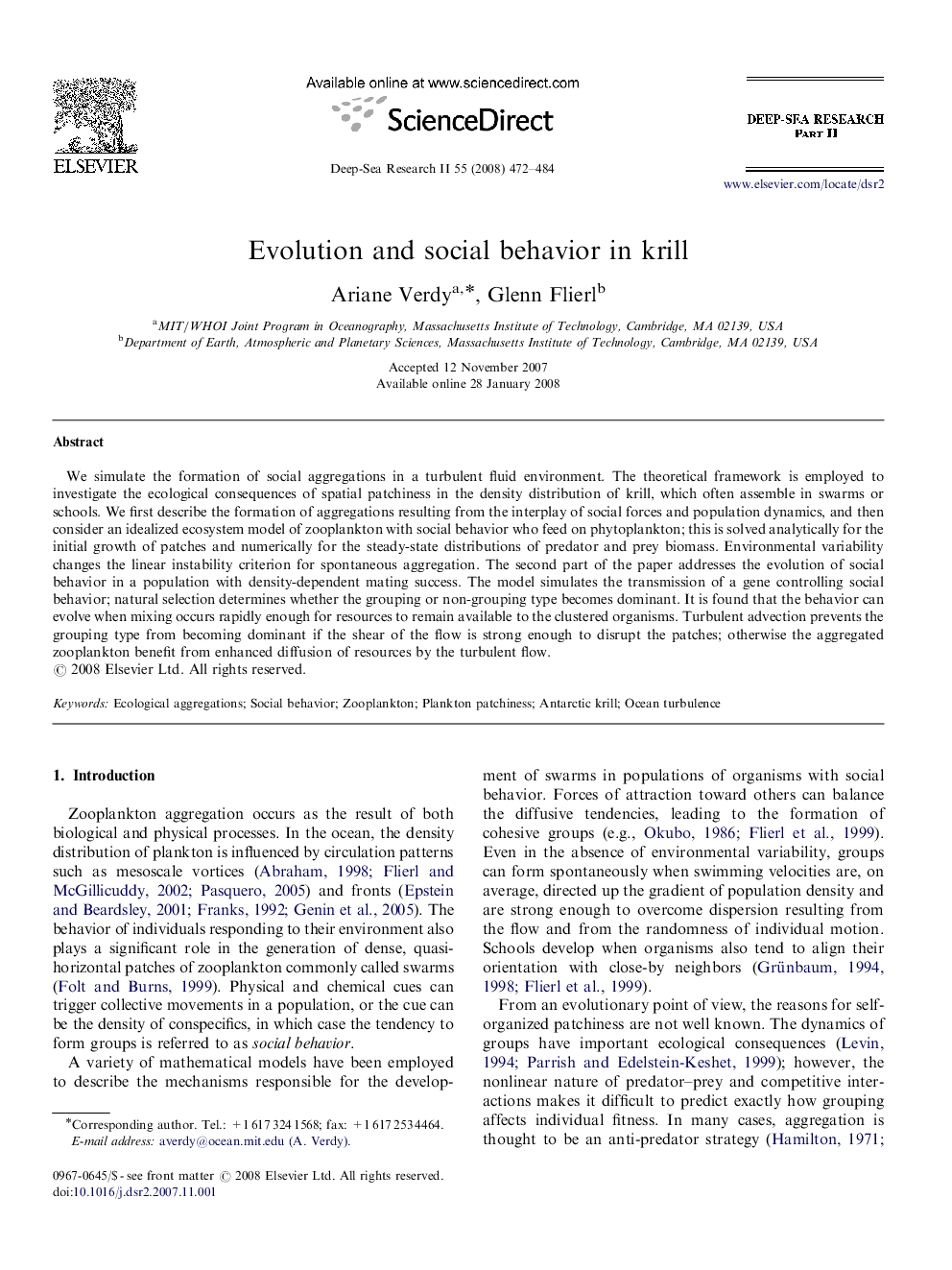| Article ID | Journal | Published Year | Pages | File Type |
|---|---|---|---|---|
| 4537493 | Deep Sea Research Part II: Topical Studies in Oceanography | 2008 | 13 Pages |
We simulate the formation of social aggregations in a turbulent fluid environment. The theoretical framework is employed to investigate the ecological consequences of spatial patchiness in the density distribution of krill, which often assemble in swarms or schools. We first describe the formation of aggregations resulting from the interplay of social forces and population dynamics, and then consider an idealized ecosystem model of zooplankton with social behavior who feed on phytoplankton; this is solved analytically for the initial growth of patches and numerically for the steady-state distributions of predator and prey biomass. Environmental variability changes the linear instability criterion for spontaneous aggregation. The second part of the paper addresses the evolution of social behavior in a population with density-dependent mating success. The model simulates the transmission of a gene controlling social behavior; natural selection determines whether the grouping or non-grouping type becomes dominant. It is found that the behavior can evolve when mixing occurs rapidly enough for resources to remain available to the clustered organisms. Turbulent advection prevents the grouping type from becoming dominant if the shear of the flow is strong enough to disrupt the patches; otherwise the aggregated zooplankton benefit from enhanced diffusion of resources by the turbulent flow.
